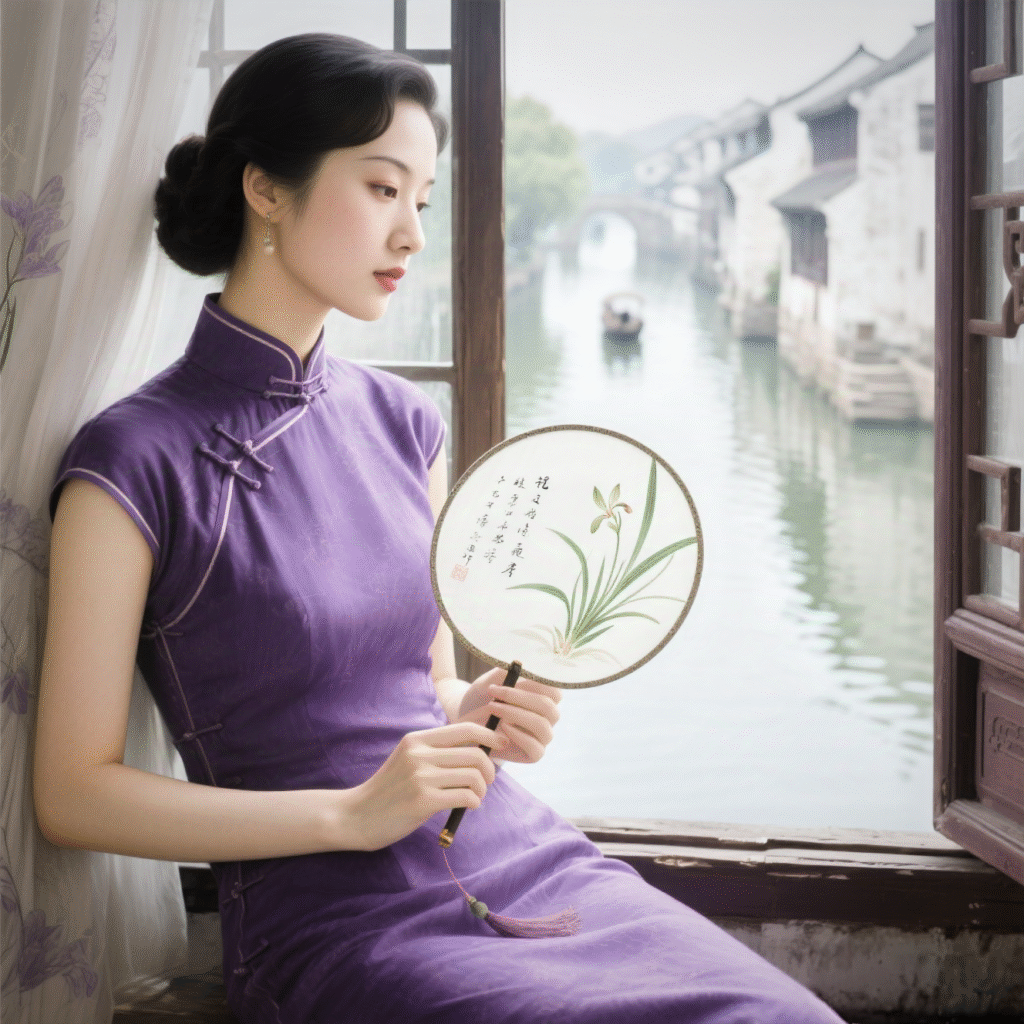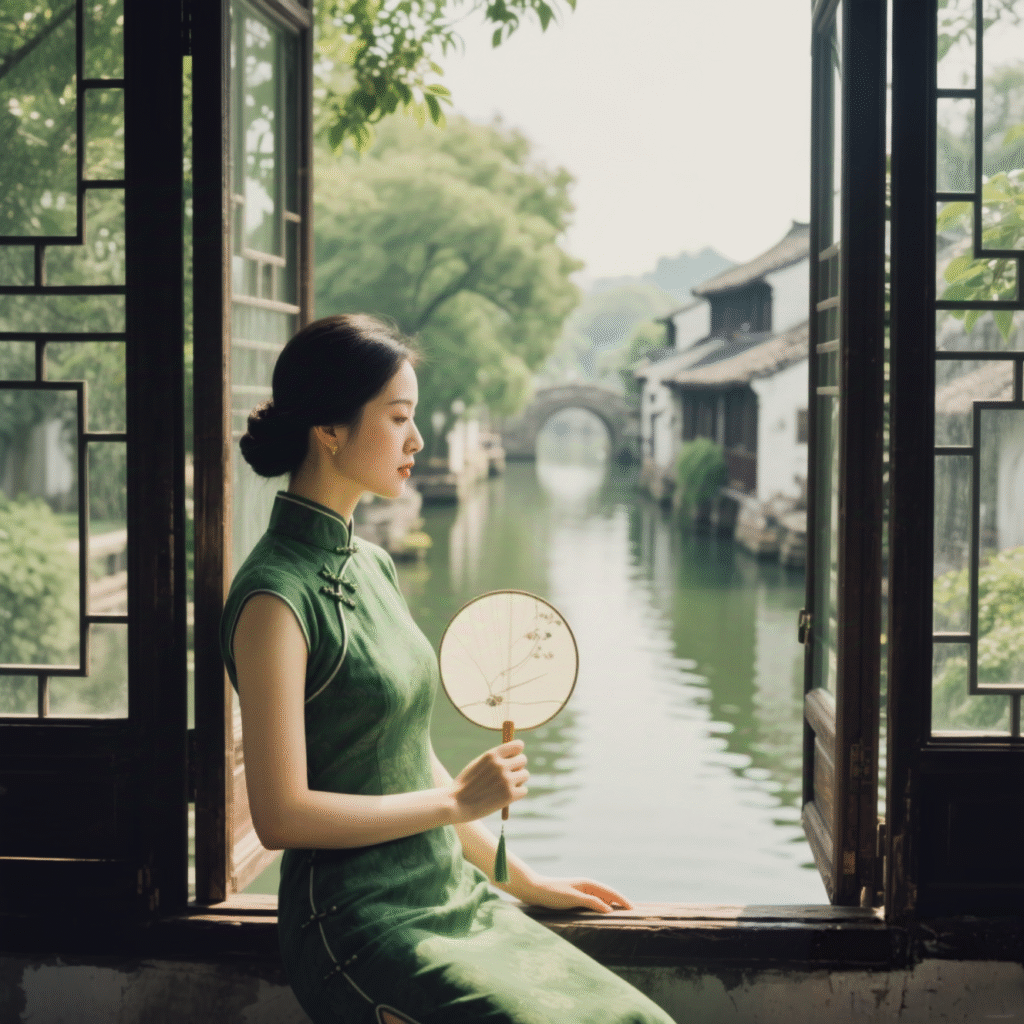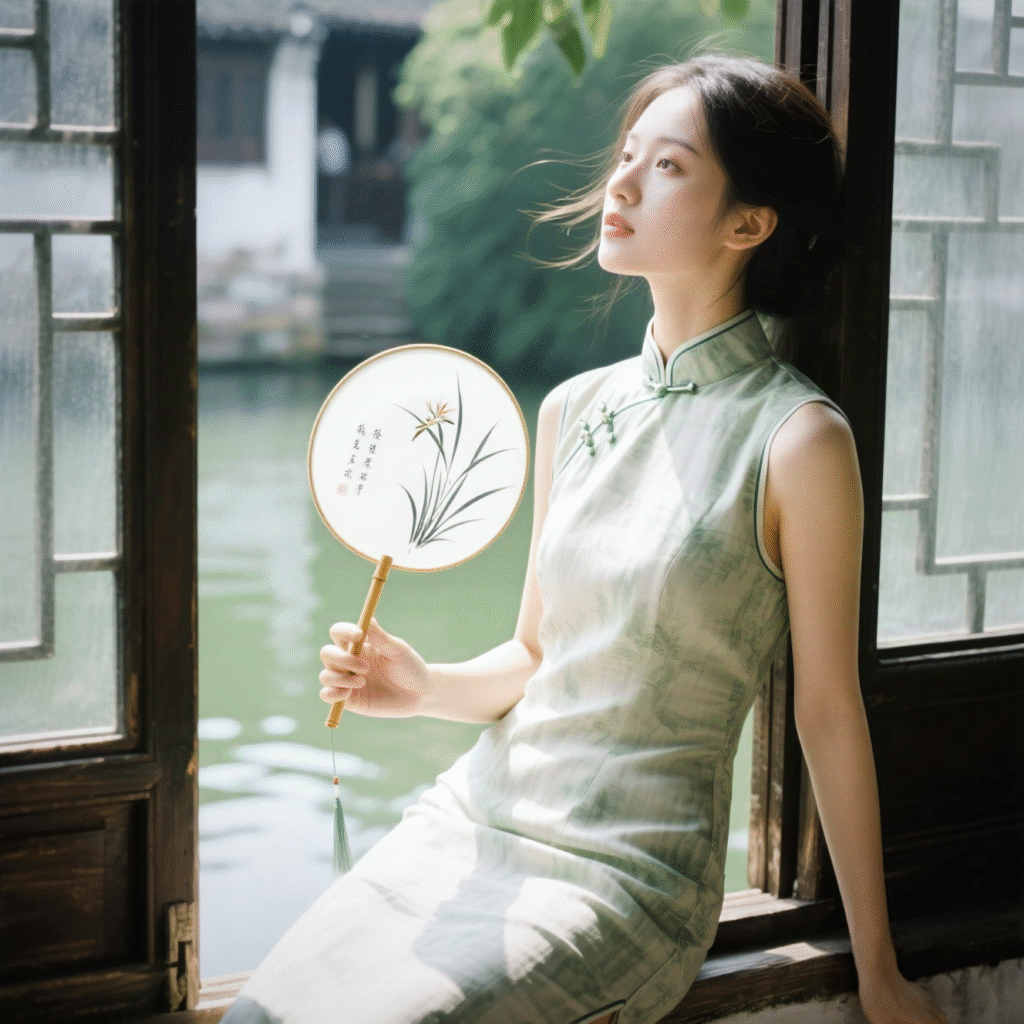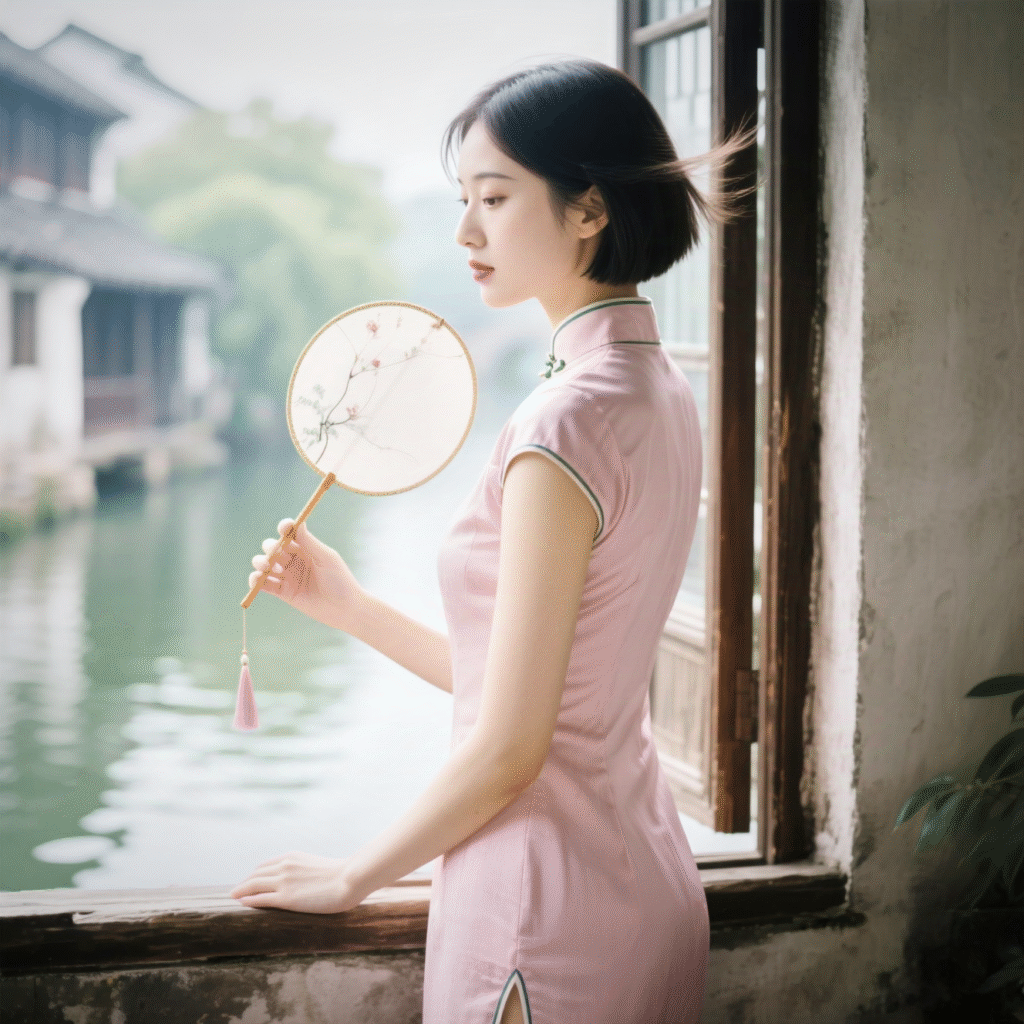Silk Fan’s Gentle Sway:
A Millennium of Elegance—The Romance in Chinese Round Fans

A Jiangnan water town, summer afternoon.
A woman in qipao leans by a waterside window, holding a round fan: plain silk face, mottled bamboo frame. On its surface, sparse orchids sketched in light ink, a delicate poem in small regular script. Her occasional gentle wave stirs a breeze—cooling, infinitely graceful. This image crystallizes classical Eastern beauty.
The Romance in Chinese Round Fans
Round fans, named for their full-moon shape, symbolize Chinese fan culture’s elegance, bearing poetic names like “Harmony Fan” (Héhuān Shàn, 合欢扇) or “Silk Fan” (Wánshàn, 纨扇). Originating in the Han Dynasty and peaking in Tang-Song, they adorned noblewomen, literati, and maidens alike.


Their charm lies beyond cooling—they are artistic vessels synthesizing handicraft excellence: fine ribs (bamboo, wood, ivory, tortoiseshell), exquisite surfaces (silk, gauze, paper, kesi, embroidery), crowned by fan-mounted painting/calligraphy. Masters inscribe landscapes, flora/fauna, figures, or poetry within miniature spaces, embodying philosophical ideals (Daoist serenity, Confucian refinement).
Eastern Charm

A fine round fan is intrinsically a scholar’s elegant artifact.
Today, it endures: as a classic handheld accessory with hanfu/qipao; as a Chinese-style space accent evoking antiquity on walls; and as high-end collectible gifts. Master-painted silk round fans, especially double-sided embroidery or kesi ICH pieces, extend this palm-held millennium of grace, infusing modernity with subtle Eastern charm.